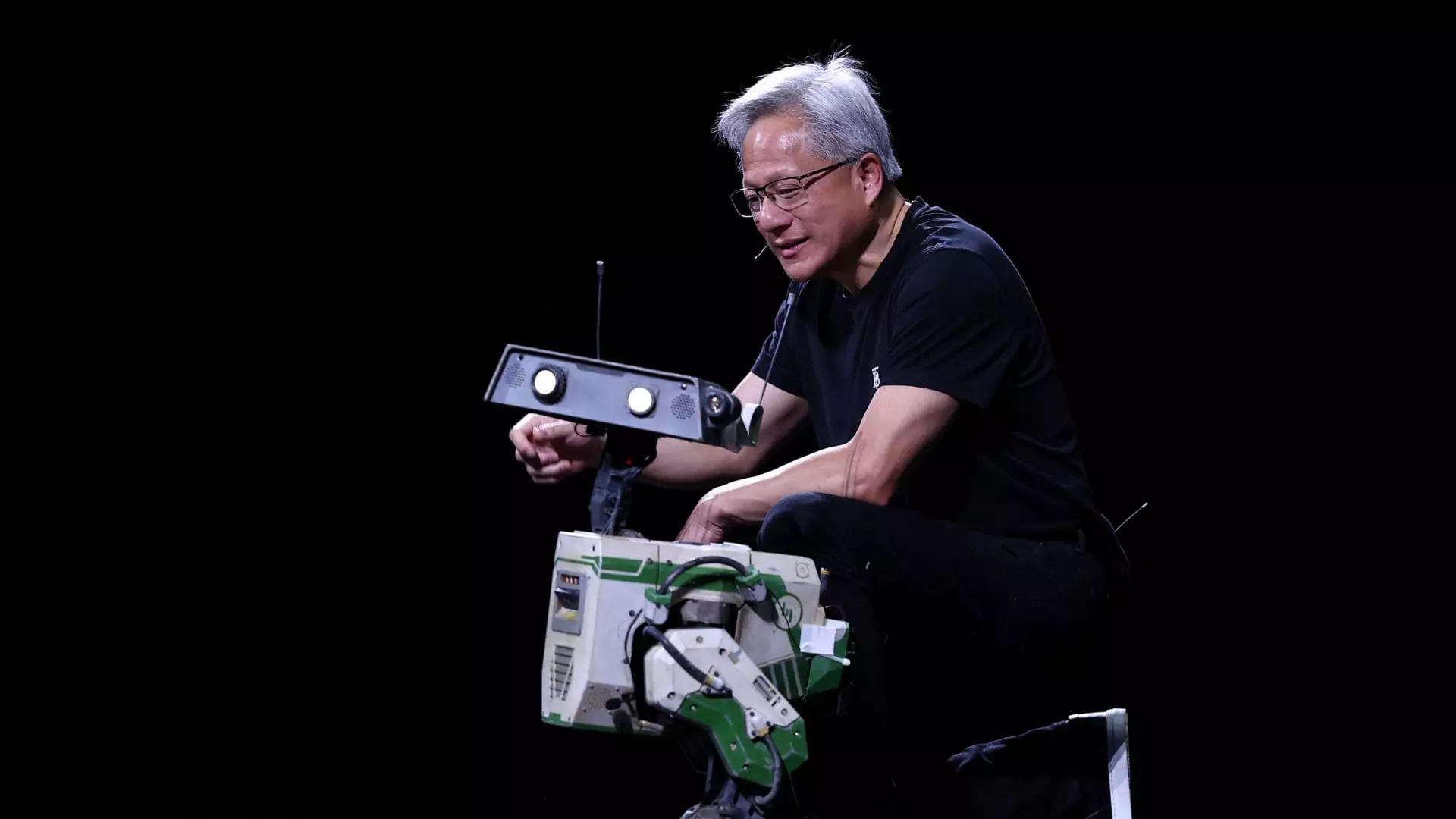Nvidia, a titan in the semiconductor industry, is stepping boldly into the future, as evidenced by CEO Jensen Huang’s recent remarks about the colossal potential within the spheres of artificial intelligence (AI) and robotics. As the company has shifted gears to focus on these transformative technologies, it is clear that it sees vast commercial prospects beyond the traditional realm of chip manufacturing. Huang emphasized that not only is AI at the forefront of innovation, but robotics also stands as a significant pillar for Nvidia’s growth strategy. This assertive vision reflects the company’s ambition to redefine its role in the evolving tech landscape.
Self-Driving Cars: The Launchpad for Robotics
One of the defining commercial applications for Nvidia’s foray into robotics is self-driving cars. Huang articulated this during Nvidia’s annual shareholders meeting, indicating a future where autonomous vehicles will become commonplace. This development hints at a broader ecosystem, where Nvidia’s technology could revolutionize transportation. The integration of AI into driving protocols challenges existing paradigms and showcases how thoroughly this technology is poised to penetrate everyday life. It’s not just about innovation; it’s about reshaping industries that have remained stagnant amidst rapid technological advancements.
Financial Surge and Market Positioning
Nvidia has witnessed astonishing financial growth, with revenues skyrocketing from $27 billion in fiscal 2023 to an anticipated $200 billion this year. This remarkable trajectory is largely attributed to unprecedented demand for its data center GPUs, which power advanced AI applications such as OpenAI’s ChatGPT. Interestingly, the burgeoning sector of automotive and robotics, now grouped under a single business unit, reported a remarkable 72% year-over-year growth. While currently small in relation to Nvidia’s overall revenue—comprised of $567 million in quarterly sales—the momentum indicates a fertile ground for future expansion.
With Nvidia’s market capitalization surging to a staggering $3.75 trillion, overtaking even industry legends like Microsoft, it is evident that investors and analysts alike are recognizing the immense potential of AI and robotics. The intersection of these two domains appears to be where Nvidia envisions its most significant competitive advantages, though skepticism remains regarding the sustainability of this upward trend amidst broader economic challenges and market fluctuations.
Evolving Infrastructure and Ecosystem Strategy
In recent years, Nvidia has recalibrated its identity from a traditional chip manufacturer to a sophisticated “AI infrastructure” provider. This transition involves a comprehensive ecosystem that extends beyond GPUs to include software solutions, cloud services, and networking capabilities—a holistic approach aimed at addressing the complex demands of AI applications. The company has unveiled platforms like Drive, which not only support self-driving cars through advanced AI algorithms but also connect various components of AI systems seamlessly.
This pivot towards becoming a complete solution provider rather than just a hardware supplier signals a strategic foresight that could potentially insulate Nvidia against disruptions in the semiconductor supply chain and fluctuating market dynamics. By offering an integrated suite of AI-driven services and platforms, Nvidia positions itself as a linchpin in the rapidly growing AI and robotics sectors.
The Future: A Landscape of Robots and Autonomous Vehicles
Huang’s vision for the future is ambitious: a world where robots are omnipresent, autonomous vehicles are the norm, and robotic factories operate with astounding efficiency. The prospects of integrating billions of robots into daily life and industries represent not only a technological leap but also a societal transformation.
The commitment to developing AI models for humanoid robots showcases Nvidia’s intention to play a critical role in this unfolding narrative. The potential ramifications are profound, hinting at a future where human labor could be supplemented—or even displaced—by intelligent machines equipped with Nvidia’s technology. This forward-thinking approach raises intriguing questions about workforce adaptation and the ethical implications of widespread automation.
Nvidia is thus not just catalyzing a technological revolution; it is influencing the very framework of societal interaction, labor, and production in an era increasingly defined by intelligence—both artificial and human. Huang’s insights are not merely forecasts; they are blueprints for a transformative future guided by innovation, creativity, and an unwavering commitment to redefining the fabric of our existence.

